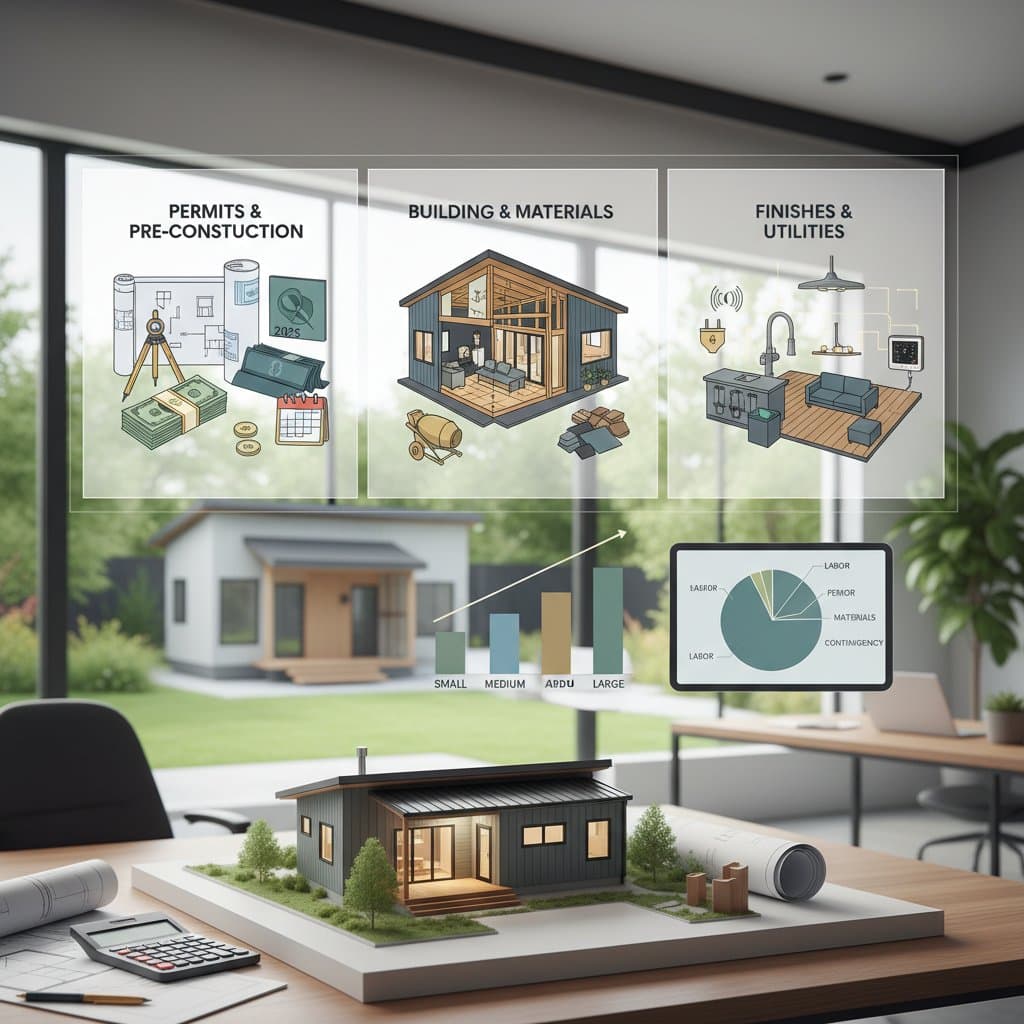Smart Home Integration: $500 to $75K+ Cost Breakdown
Smart home technology has evolved from an emerging trend to a core element in contemporary home design and renovation projects. Homeowners who integrate these systems often seek clarity on expenses and potential returns, and this guide provides a detailed breakdown to inform those decisions. Through years of implementing smart solutions in various builds, we have seen how strategic choices can enhance daily living while delivering measurable value.
Understanding Smart Home Integration
Smart home integration connects various household systems through a unified network, allowing control via a central hub or mobile application. This setup manages elements such as lighting, security, climate control, entertainment, and appliances, which promotes convenience and efficiency. The extent of integration you select influences both initial costs and long-term benefits, and professionals often recommend starting with a clear assessment of your home's layout and needs.
Breaking Down Cost Ranges
Costs for smart home integration vary based on scope and complexity, and the following categories offer realistic expectations drawn from numerous installations.
-
Entry-Level Systems: $500 to $2,500
These options include basic devices like smart thermostats, door locks, security cameras, and lighting kits. Homeowners can install many of these themselves using straightforward app connections, which makes them accessible for those testing smart features without major commitments. -
Mid-Range Systems: $5,000 to $15,000
This level extends to multiple rooms with integrated lighting, audio, and security components. Professional installation becomes essential here to ensure reliable performance and avoid compatibility issues. -
Full Home Integration: $20,000 to $75,000 or more
Comprehensive setups control climate, media, window treatments, lighting, and appliances across the entire property. These systems work best when incorporated during new construction or major remodels, where infrastructure like dedicated wiring can be planned from the start.
Factors such as home size, device quantity, and the choice between wired and wireless options play significant roles in final pricing. Labor costs typically add 20 to 40 percent, as skilled technicians handle complex integrations to prevent future disruptions.
Essential Investment Areas in Smart Homes
Climate Control Systems
Smart thermostats and connected HVAC units learn occupancy patterns and adjust temperatures accordingly, which reduces energy waste and enhances comfort. For instance, integrating these with zoned heating allows precise control in different areas, potentially cutting utility bills by noticeable margins when paired with efficient insulation.
Lighting and Window Treatments
Automated lighting systems enable scheduling, dimming, and scene-setting for various activities, while motorized shades block sunlight to maintain cooler interiors and protect furnishings. These features not only boost energy efficiency but also contribute to a sophisticated aesthetic that appeals to modern homeowners.
Security and Monitoring
Components like smart locks, video doorbells, and comprehensive camera networks offer robust protection through real-time alerts and remote access. When combined with motion sensors and alarm integrations, they create a multi-layered defense that may qualify for insurance discounts in certain scenarios.
Entertainment and Audio Distribution
Whole-home audio systems distribute sound seamlessly across rooms, eliminating the need for separate devices and simplifying entertainment setups. This integration proves particularly valuable for households that host gatherings, as it allows effortless streaming without technical hassles.
Kitchen and Appliance Connectivity
Connected appliances, including refrigerators and ovens, provide notifications and remote controls that streamline daily tasks. While these additions enhance convenience, they often represent premium upgrades best suited for those prioritizing a fully automated lifestyle.
Calculating Return on Investment
Smart home features deliver returns through energy savings, increased property value, and improved quality of life, though outcomes vary by system type. Energy-focused elements like thermostats and automated shades can decrease heating and cooling expenses by 10 to 20 percent annually, based on consistent usage patterns observed in completed projects.
Homes equipped with these integrations frequently attract buyers faster and command higher prices, as market trends show growing demand for built-in technology. Beyond finances, the convenience of voice-activated controls and automated routines adds intangible benefits that make daily life more efficient and enjoyable.
Strategies for Effective Planning
Begin by identifying priorities that align with your routine, such as starting with security for peace of mind or energy systems for cost savings. Select scalable platforms that support future additions, allowing you to expand from basic lighting to comprehensive climate control over time.
Evaluate wired versus wireless options: wired setups offer superior reliability for larger homes, while wireless alternatives suit retrofits with minimal disruption. Factor in maintenance needs, including software updates and periodic device checks, to sustain performance.
For installation, handle simple devices yourself if you have basic technical skills, but engage professionals for intricate systems to ensure optimal functionality. At Critchfield Construction, we emphasize this approach in our projects to deliver lasting results.
Additional Cost Considerations
Beyond devices, budget for professional installation to guarantee system stability and prevent common pitfalls like network overloads. A robust home network, whether enhanced Wi-Fi or dedicated cabling, forms the backbone for multiple connected elements.
Ongoing costs include subscriptions for cloud storage or monitoring services, typically ranging from $10 to $50 monthly, which support features like remote access and data backups.
Common Questions Addressed
How does smart technology influence home resale?
Yes, integrated systems enhance appeal, particularly in security and energy management, as buyers view them as modern necessities.
What factors guide control hub selection?
Opt for hubs compatible with your intended devices, and verify support for major brands to avoid integration challenges.
Is retrofitting possible in older homes?
Absolutely, wireless solutions simplify additions, though incorporating wiring during renovations maximizes efficiency for extensive systems.
Which investments yield the best returns?
Thermostats, lighting, and security balance immediate savings with long-term value, while entertainment features prioritize comfort over financial gains.
Key Insights for Implementation
Smart home integration represents a blend of lifestyle enhancement and strategic investment, with costs scaling to match ambitions. By focusing on high-impact features and planning thoughtfully, you can achieve systems that deliver comfort, efficiency, and enduring value in your home.









